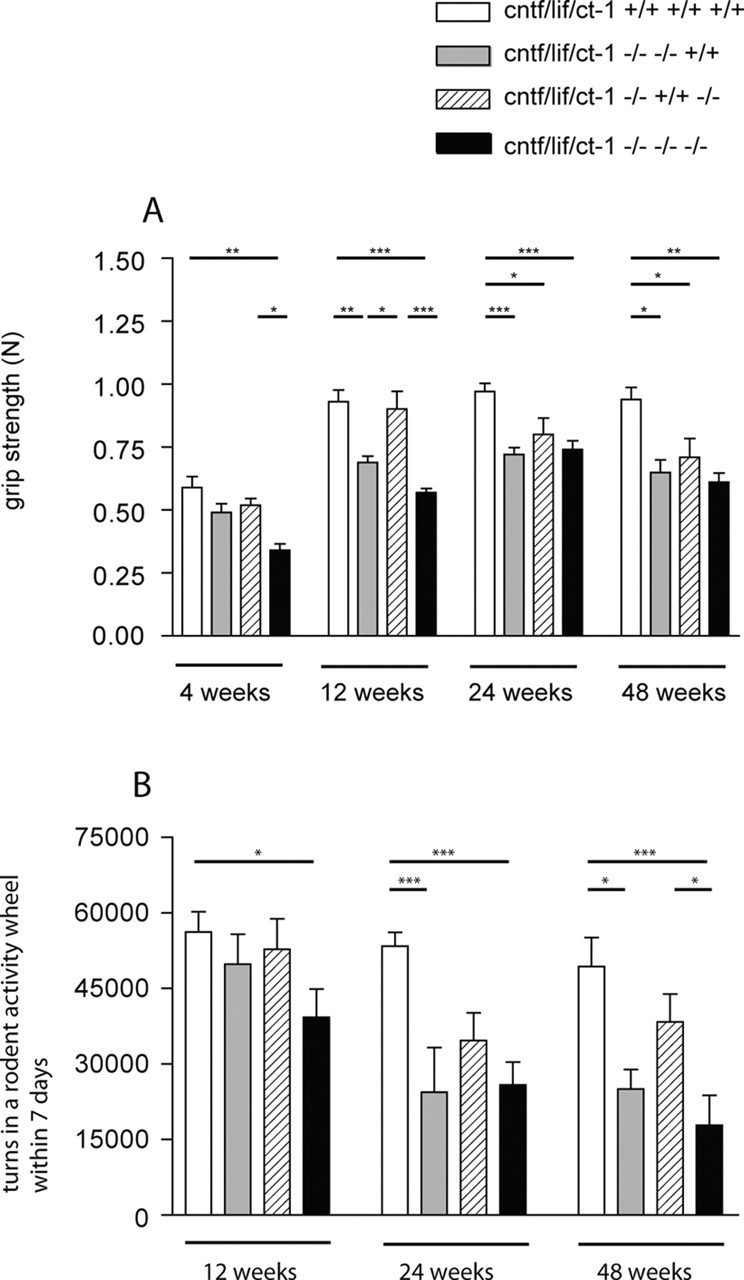Figure 2.

A, Forelimb grip strength was determined in male wild-type control, cntf/lif double-knock-out, cntf/ct-1 double-knock-out, and cntf/lif/ct-1 triple-knock-out mice using an automated grip strength meter as described previously (Masu et al., 1993). Values shown are mean ± SEM from 10 determinations per animal. Statistical significance of the differences between the groups was tested by one-way ANOVA. Comparison of the individual groups by Bonferroni's post hoc comparison test gave the following results: *p < 0.05; **p < 0.01; ***p < 0.001. B, Voluntary movement determined in a rodent activity wheel over a time period of 7 d. Results are given in mean ± SEM. The differences between the groups were tested by one-way ANOVA. Additional analysis by Bonferroni's post hoc comparison test showed that the difference between wild-type and triple-knock-out mice is significant at 12 weeks of age (*p < 0.05) and at 24 and 48 weeks of age (***p < 0.001). Motor function is also significantly reduced in 24-week-old (***p < 0.001) and 48-week-old (*p < 0.05) cntf/lif double-knock-out mice compared with wild-type mice and in 48-week-old triple-knock-out mice compared with cntf/ct-1 double-knock-out mice (*p < 0.05).
